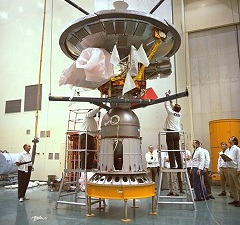I am so not into sports. But the Olympic opening ceremony is something else. It can be spectacular, it can be inspiring even, and these adjectives certainly applied yesterday.
Except for the way it was presented on CTV to Canadian viewers.
I missed the first 15 minutes of the original broadcast, so by the time I started watching, most of the huge smokestacks were already standing. No problem, I thought: I quickly checked the TV schedule and sure enough, a repeat broadcast was scheduled later in the evening.
So I waited patiently for the repeat, eager to see how a pastoral landscape transforms itself into an industrial heartland (arguably the most spectacular part of the show). Indeed, the leaders of industry arrived in their Omnibus, Sir Kenneth Brannagh had his speech and then… and then CTV decided to have a commercial break. A really long commercial break. So long, in fact, that by the time they returned to the broadcast, most of the huge smokestacks were already standing.
I was irritated but then I thought, maybe I can watch the video on CTV’s Web site. There is no reason for a Web broadcast not to include those 5-6 minutes even if they do insert commercials.
Guess what: the same 5-6 minutes were missing from the Web video version, too.
This morning, I decided to check again to see if perhaps the missing segment was restored. The site is now different, with many more videos available. Too bad I cannot watch any of them… the Silverlight player employed by CTV just shows a grey rectangle regardless of which browser I use (tried another computer, too). Yes, Microsoft Silverlight. I guess that’s CTV’s way of saying “screw you” to Linux users… But even that does not explain the grey rectangle on Windows.
Boneheadedness from CTV aside (eventually I found the missing segment on YouTube, albeit with some completely inappropriate Russian pop music as a substitute soundtrack), the opening ceremony was amazing. Perhaps not the kind of extravaganza produced in Beijing four years ago, but I actually found this one warmer, closer to the heart. Yes, weird at times (I almost thought I’d see Doctor Who appear at one point, chased by some Daleks, but what did I expect? They are Brits, for crying out loud) yet funny and human. In short, I will remember it. I’ll remember this show (and not for the wrong reasons, like I remember the dancer with the ridiculous glowing belly in Athens in 2004) much more than I remember the Beijing ceremony, however extravagant it might have been.
And now I am watching a bicycle race. One of very few sports that I actually enjoy watching.
Update: CTV’s video player is working again, and the version they currently have on their Web site no longer has that 5-6 minute gap at the beginning of the industrial revolution segment. There is still a brief commercial break but I’m not sure if any footage from the opening ceremony is actually missing.






 Having been told by a friend that suddenly, there is a
Having been told by a friend that suddenly, there is a